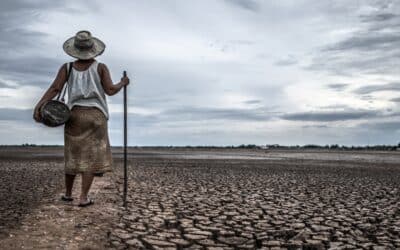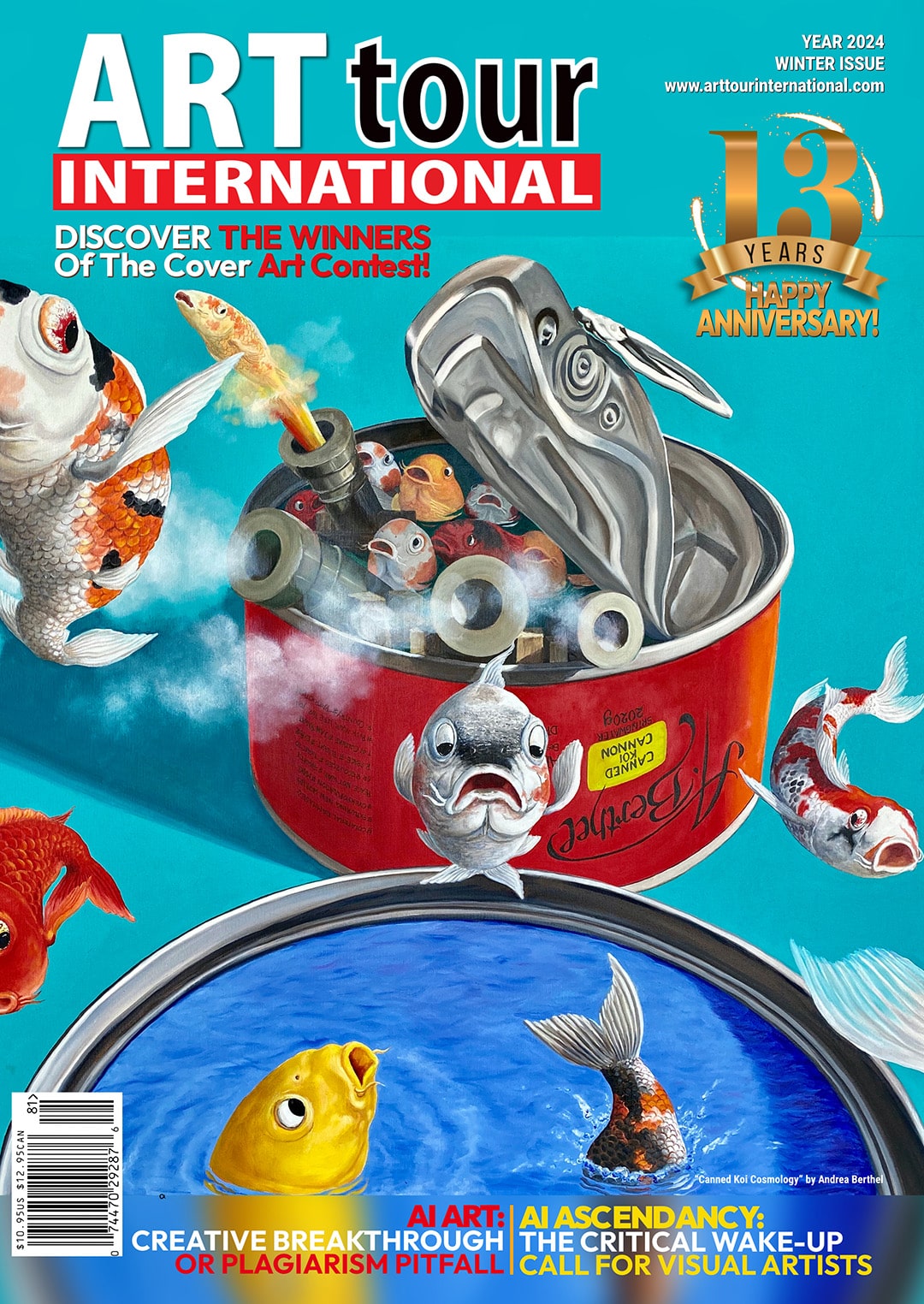Table Of Content
Here we are, a new year and another opportunity to make this year’s Earth Day the best one yet. Last year’s Earth Day theme was centered around plastic pollution in our oceans and its environmental effects. This year, I wanted to expand on that topic with one of the side effects of Plastic Pollution: Microplastics. As we plan for the 2024 Earth Day theme of “Plastics vs. Planet” and the World Environment Day theme of “Journey to a Greener Future,” microplastics become a crucial topic for discussion as our planet continues to pay the price as we strive for technological advancements, convenience, and economic growth. One such price is the unseen invasion of microplastics, an environmental and health concern affecting every corner of the world. These tiny plastic particles have permeated our everyday lives, from water supplies, food, gardening, and weather. Microplastics is genuinely a battle we need to win, and it all starts with understanding its beginning, evolution, and impact on our planet.
Microplastics Defined
Let’s begin with how microplastics are defined and formed. Plastics are made from raw materials like natural gas, oil, or plants, refined into ethane and propane. Ethane and propane are then treated with heat in a process called “cracking,” which turns them into ethylene and propylene. These materials are combined together to create different organic polymers. As these plastics break down, microplastics are formed either by chemically degrading or physically wearing down into smaller pieces ranging from less than 0.2 inches (5 millimeters) down to 1/25,000th of an inch (1 micrometer), which is about the size of a single sesame seed. As if those were not elusive enough, here comes Nanoplastics! Nanoplastics are smaller than microplastics, so much so that they must be measured in billionths of a meter. They are too small to see with an optical microscope. Like microplastics, these practically undetectable particles have been found in our drinking water, food, and bodies!
Microplastics have a nefarious effect on our environment, acting as silent predators that disrupt ecosystems and threaten many organisms. These tiny plastic pieces do not discriminate in their victims, entering the bodies of organisms ranging from microscopic plankton to the most enormous creatures. Their intrusion has consequences, often leading to stunted growth, decreased fertility, and diminished survival rates, endangering biodiversity.
What makes microplastics particularly menacing is their longevity. These particles are non-biodegradable, meaning they stay in our environment for a long time. Their persistence contributes to the escalating global plastic pollution crisis, causing irreversible environmental damage.

Microplastics from our Ocean
There are many ways microplastics and nanoplastics enter our environment. One of these sources was our topic for 2023: Plastic Pollution in our oceans. Sadly, 80% of what ends up in our oceans and collects in one of the five garbage patches of the world (One in the Indian Ocean, two in the Atlantic Ocean, and two in the Pacific Ocean) comes from Land – rivers in low to middle-income countries without effective waste management. Garbage patches in our oceans are offshore plastic accumulation zones with rotating ocean currents called “gyres.” These gyres pull debris into one location, often the gyre’s center, forming “patches.”
To get an idea of their magnitude, The Great Pacific Garbage Patch covers an approximate surface area of 1.6 million square kilometers – equal to an area twice the size of Texas and three times the size of France. In this situation, large pieces of plastic break down into microplastics through weather and battering from the waves. It has been found that marine animals of all sizes seek shelter in these garbage patches and feed near them, ingesting microplastics and then being eaten by bigger fish and so on, interweaving throughout the food chain and onto our dinner tables. The ingestion of microplastics can be hazardous both for marine wildlife and, potentially, humans. In fact, numerous videos on YouTube alone analyze tuna from a can under the microscope to see what they find. They discovered microplastics in the flesh of the fish and the liquid from the can. Realizing the magnitude of the distribution of tuna fish products, this is nothing short of startling! It only leaves you to wonder about all the other fish products we purchase for our consumption.
There are practices in place, however, that are working to remove 90% of the plastic waste in these patches by 2040 through a non-profit organization called The Ocean Cleanup. The goal is to remove as much of the enormous plastic waste as before it can break down into smaller, more dangerous pieces, reducing its impact. Throughout the Oceans Cleanup efforts and research, they have derived that plastic pollution in the world’s oceans is one of our most significant environmental issues, impacting nearly 700 marine species.

Microplastics and Wildfires
Wildfire activity is more than just the destruction of forests and the displacement of wildlife; it is a complex environmental issue that severely affects our air quality and poses significant health risks for humans and animals. As fires rage and burn, they release harmful gases and particles into the atmosphere, contributing to the deterioration of our air. In fact, the World Health Organization has reported that when wildfires impact urban areas, the materials burned contain more toxic chemicals than those from wildfires that consume wood and other natural materials. Microplastics can enter the environment from wildfires in several ways. As plastics burn, they can break into small pieces that can enter the environment through aerosols, rainfall, or by putting out fires with water that already contains microplastics.
If we were to consider all the products in our homes that come from plastics, including our plumbing, siding, and other materials that are susceptible to breaking down during a wildfire and becoming part of our environment, the potential impact would be staggering!
Microplastics in the air affect the weather
Let’s take microplastics that enter our air from wildfires and other sources to another level. Not only are we breathing in these particles, but is it possible that while they float in our atmosphere and travel, they affect our weather patterns? Why not! Microplastics and nanoplastics are so tiny they become airborne and enter our atmosphere. In the atmosphere, they can become part of our cloud structure in the same way that dust, ash or salt from our oceans do. This is mainly because microplastics are hydrophilic, which means they are attracted to water. As water droplets cling to microplastics, more water droplets are pulled together, and clouds form, supporting the theory that these tiny particles influence the weather. The more particles in the atmosphere, the more clouds form creating more storms and temperature fluctuations.
In a study published in the American Chemical Society’s Environmental Science & Technology Letters, researchers detected microplastics in most cloud samples from a mountaintop in China. The study traced how the microplastics ended up at their final location and discovered they could play a role in cloud formation. Tracing back to ascertain the microplastic’s origins, it was found that not only did the microplastics come from halfway around the world, but they were from another large contributor to microplastics: rubber tires! Well, let’s absorb that one, shall we? Talk about magnitude! When we consider how many cars are on how many roadways all over the world screeching to halts, breaking down, and eventually becoming airborne, wow! Yes, tires are not only made of rubber but contain about 24% plastic material as part of their makeup.
In the end, microplastics are in the air we breathe, our drinking water, and our bodies! As if staying healthy wasn’t already a challenge, a new study has found that the average bottle of water contains nearly a quarter million fragments of nanoplastics — plastic particles so small they can potentially gum up the machinery of human cells. Remember, microplastics are measured in millionths of a meter, whereas nanoplastics are measured in billionths of a meter! This is what makes nanoplastics an even more significant threat in many ways. Still, the biggest is its ability to get into our bodies, cross different cellular barriers to get into the cells or organs, causing them to malfunction, interfering with the chemistry of the human body, and causing impacts both on and from the communities of microbes in our gut that help us digest food.
So, with all of that information, if these possibly dangerous compounds are found in bottled water, one must ask the question, is it safe to drink? Especially when we return to wildfires as a source for introducing microplastics and nanoplastics into our environment. As soot and ash enter the air and travel long distances, we breathe in the tiny particles. They are deposited in our water sources and, by default, enter our bodies in multiple ways. The fact that ash and soot travel long distances based on winds also adds to the fact that they enter our upper atmosphere and do not all come back down right away.
When these tiny particles do eventually come back down, besides all the impacts already discussed, we have yet another to consider: how they affect our food chain through farming and home gardens.
Microplastics in garden soil
So, since we’ve talked about microplastics and nanoplastics in our water sources, atmosphere, oceans, and bodies, it’s only logical that these nasty tiny particles are present in our garden soil, both at home and in larger farmlands.
Research into microplastics in our soil is minimal and the impact of microplastics in our soils is not fully understood. However, the scale of the problem is beginning to emerge. Various studies have found micro and nanoplastics in fruits and vegetables. Carrots and apples seem to contain the most particles in these studies, and it’s believed to be because of large root structures. In any case, microplastics are responsible for many changes in the soil, which can lead to these results. Changes like destroying the soil structure, altering the physio-chemical properties of soil, affecting nutrient mobility and moisture diffusion in soil, reducing the availability of nutrients, altering microbial activities, affecting crop development and growth, reducing seed germination (which I’ve personally experienced in recent years in my own garden), slowing down development of roots during germination, and influencing greenhouse gas emissions.
It has also been found that micro or nanoplastics are in the digestive systems of earthworms and other soil biota. Some worms experience stunted growth, and others die after ingesting these particles. These worms and biota are crucial to the health of our soil. As gardeners and composters, we spend a lot of time producing ideal environments for these soil biotas to thrive, so keeping microplastics out of our soils is another way to keep our soils healthy and productive. Plus, anything that eats these worms (birds, frogs, skunks, etc.) will also ingest microplastics and, in turn, risk experiencing these same adverse effects.
One thing we can do as home gardeners to minimize microplastics in our soil is to create our own compost free of products that may contain plastic like tea bags, coffee cups, or any paper product with some coating, no pet hair or dryer lint, or fireplace ash. Our compost should be nothing but food products.
This may seem fruitless (no pun intended) and have a small impact, but the more of us who start making changes for the better, the greater the effect.
Food for thought: Plastic toys
Lastly, let’s not forget all the plastic toys we purchase for our children and pets. Toys are one of the primary sources of microplastic exposure for children. Toys are often made of plastic and contain harmful additives like EDCs and BPA. Children may put toys in their mouths due to their hand-to-mouth behavior. Chewing can also lead to babies swallowing small amounts of plastic, especially from plastic teething rings. A 2020 study, for example, found that bottle-fed babies swallow millions of microplastics daily.
Equally, microplastics are often found in dog, cat, or bird toys made from plastic and petroleum-derived fibers. When our pets play with toys or chew on bedding that contains plastics, they can ingest these particles and potentially cause health problems.
Tackling the Microplastic Problem – A War on Many Fronts
The path to overcoming the microplastic menace is layered, demanding a synergistic approach that leaves no stone unturned. A collective effort to reduce reliance on single-use plastics should be at the heart of this strategy, as should shifting our focus towards earth-friendly substitutes. Implementing this practice isn’t just a matter of choice; it’s a much-needed change that needs to be part of our everyday lives.
There’s a pressing need for accountability and proactive action on the industrial front. Manufacturers must shoulder responsibility for the entire lifespan of their products, from production to the post-consumer phase. Investment in research is non-negotiable if we aim to lessen or eradicate the creation of microplastics.
The role of government is just as critical in this war against microplastics. Robust policies on plastic disposal, backed by strict enforcement, can significantly curb the flow of these tiny pollutants into our ecosystems. Governments must also prioritize investments in wastewater treatment technologies. Advanced filtration systems that can effectively sieve out microplastics should be high on the agenda.
We, as individuals, are also soldiers in this fight. We wield the power to make a difference with every choice we make. Whether opting for personal care products devoid of plastic microbeads or responsibly disposing of plastic waste, our daily decisions can significantly alleviate the microplastic crisis.
Our war against microplastics is not going to be an overnight victory. It requires sustained efforts and a shift in our mindset. Each of us has a role, from consumers to manufacturers to policymakers. The more fronts we can battle this issue from, the better our chances of winning.
We have the weapons; now it’s time to strategize and strike.


















